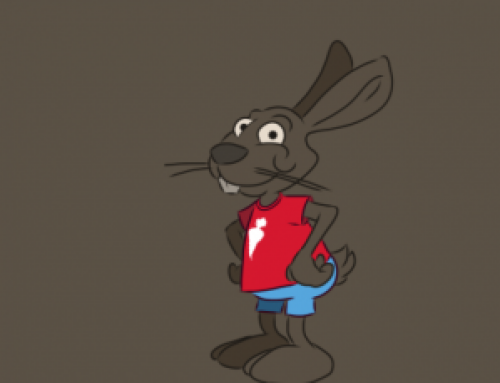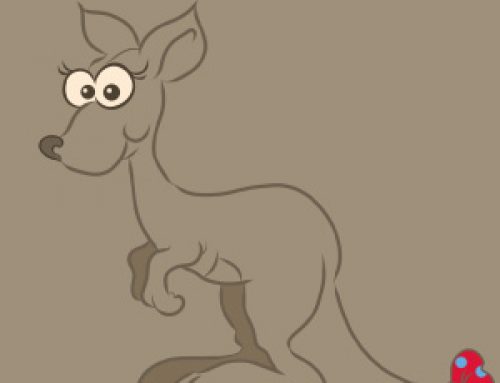Suitable for:
- 1 or more players
- Outdoor or indoor area
- Range of physical literacy: running
- Age appropriate: 3-7 years
Primary physical literacy skill:
object handling, running, skipping, jumping, hopping, leaping, galloping
Make it happen
 Set up a running lane with a line of different coloured marker saucers (if you don’t have marker saucers, you could just place different coloured socks on the ground).
Set up a running lane with a line of different coloured marker saucers (if you don’t have marker saucers, you could just place different coloured socks on the ground).- Place a tennis ball or other appropriate object on one of the marker saucers.
- Call out a colour of one of the marker saucers and the children run out from one end to pick up the object and swap it to the right coloured one and then run back to the start point.
- Keep calling out different colours and the children need to keep swapping the object to the new colour.
If more than one child:
- You can give each child a lane so they can race each other. Set the markers at different distances to make it fair if the children are different ages/abilities.
- You can also put the children into teams and give them a number each. Call out a number and a colour each turn e.g. ‘2, blue’ (the number 2s in each team run out and move the object from wherever it is to the blue marker).
If teams have an odd number (see diagram) then a child in one team can have more than one number.
- Ensure that the movement the children are performing is suitable for the space you have available.
- Explain that children should bend their knees when reaching down to pick up objects to build up leg muscles and not put strain on their backs.
- To avoid collisions make sure lanes are not too close and that any teammates in a relay are waiting at a safe distance at the handover point.
- Make sure all objects being used are appropriate to run around with (e.g. like a tennis ball).
- Make sure whatever you are using for markers do not pose a slip or trip hazard.
We provide this list only as a guide of what parents/carers may wish to consider. Please also read our general guidelines on the Parents/Carers Information page.
Expand the headings below for suggestions to make more use of this activity and keep you and your children coming back for more
- What could the object(s) represent? Some ideas: jewels that need to be moved to different hiding places, a water supply that has to be continually moved to different plants in the garden, etc.
- The children have to invent a different noise and different movement type for each colour they move the object to.Some ideas: move like an alien made of jelly and make a noise like ‘splatch’ every time the object is moved to a green marker; waddle like a goose and make a ‘honk’ every time the object is moved to a blue marker; etc.
Leaper’s theme: Frisbee stores a fish she has caught on a rock. While she is in the sea, other penguins try and steal her fish so she has to keep rushing back and hiding it on different rocks.
Please also read our general guidelines on the Parents/Carers Information page.
- To provide further object handling challenges, keep swapping the object after a few turns with ones of different size, shape and weight. Some ideas: tennis ball, beanbag, football, empty plastic water bottle, a tea towel.
- Place a different object on each marker (see list above) and call out two objects the children have to run out and swap around e.g. tennis ball and football.
- Start by holding just one object in their hands with all the markers empty. Run out to the first marker, place the object down and run back to the start point. Run back out and now swap the object from the first marker to the second one and return back to the start. Keep going until the object has moved all the way to the furthest marker.
How long did it take? Can they beat their time?
Please also read our general guidelines on the Parents/Carers Information page.
Always make sure whatever equipment you are using is safe and appropriate for that use.
- If you don’t have marker saucers then make sure that what you are using instead (e.g. socks) don’t pose a trip hazard.
- Choose small objects that are appropriate to carry in the hand when running such as a tennis ball, beanbag, soft toy (e.g. no hard or sharp edges).
Please also read our general guidelines on the Parents/Carers Information page.
- Running backwards and forwards between two points is referred to as performing ‘shuttles’. Try and come up with different movement types the children can perform when doing their shuttles.
- They could perform a different movement each time or for a set amount of turns (e.g. after 5 turns of running they could do 5 turns of galloping).
Some different movement ideas:
Running, jumping, hopping, hopscotch, skipping, running backwards, sidestepping, galloping, leaping, crawling on hands and feet, wriggling along on tummy, slow motion, etc.
- NB: repeatedly jumping and hopping will be quite high energy activities so alternate them with less intense movements such as walking, skipping, jogging to provide recovery time.
Please also read our general guidelines on the Parents/Carers Information page.
Printable PDF download here
Use of the resources
This move to improve resource is provided as a guideline only for parents and carers who wish to supervise physical activities for their children. Users of this resource have a duty of care to ensure the safety of their participants. We do not endorse the use of any content in this resource that a user feels may present a risk to the safety or well being of the children in their care.








